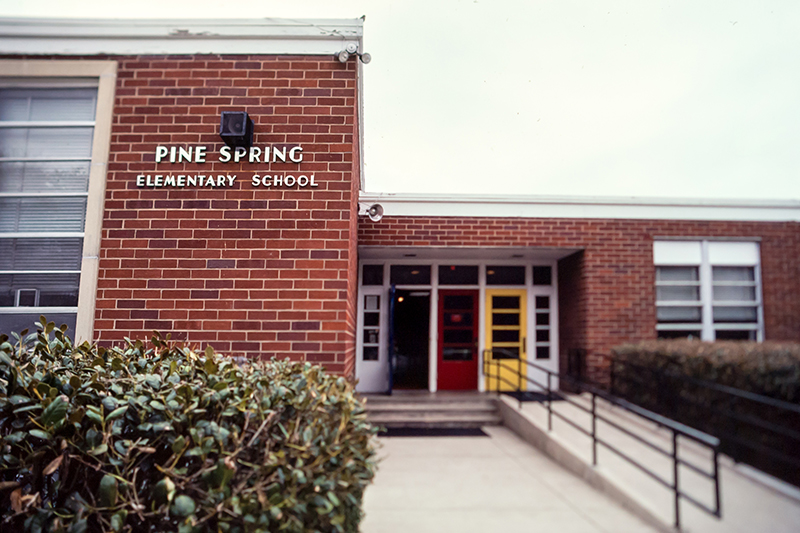School History
Pine Spring Elementary School opened on September 6, 1955, during the post-World War II period known as the baby boom. In 1950, there were 16,163 children enrolled in Fairfax County Public Schools (FCPS). By 1960 that number would climb to 59,870. In 1954, the Fairfax County School Board purchased eight acres of land from E. N. Chiles on which to build our school. However, the Virginia Department of Education refused to approve the school site because guidelines stipulated that elementary schools needed to be built on at least ten acres of land. With classrooms already overcrowded at the existing schools in our area, the School Board could not afford to lose our school site so they purchased an additional 2.4 acres of land at $4,000 per acre, a hefty sum in the 1950s. In October 1954, the contract for construction of our school was awarded to the Eugene Simpson & Brother Construction Company in the amount of $362,548. Our building originally had 20 classrooms and was designed by architect Earl Bailey, the same architect who designed Timber Lane Elementary School. Pine Spring Elementary School was one of ten new schools that opened in September 1955. Our first principal was Virginia Hazelgrove. She was hired on a ten-month contract at a salary of $5,850. The salaries of the 20 teachers that opened Pine Spring Elementary School ranged from $3,400 to $4,800.
Where did the name Pine Spring come from?
Integration
The Fairfax County public school system was founded in 1870. For the first 76 years of its history, public schools in Fairfax County were segregated by race. Pine Spring Elementary School was built to serve the rapidly expanding white suburban communities west of Falls Church. At that time, African-American children from our area attended the all-African-American James Lee Elementary School on Annandale Road. All racially segregated public schools in Fairfax County were closed at the end of the 1965-66 school year, marking the beginnings of the ethnically and culturally diverse Pine Spring school community we know today.

Camp Alger
The land where Pine Spring Elementary School stands was formerly part of a large plantation called Woodburn. Following the outbreak of the Spanish-American War, in May 1898, Secretary of War Russell Alger selected Woodburn and several other farms near Merrifield upon which to build a training facility for the United States Army. By the end of June some 23,000 troops were stationed in the area at Camp Alger. The future site of Pine Spring Elementary was a hotbed of military activity. The U.S. Army's 1st Division Headquarters was located here, as well as the campsite for the 9th Ohio Infantry Regiment, the 1st Division's horse corral, and two army hospitals. Maps of the camp show several Artesian wells in the area from which the soldiers drew their drinking water. The ample supply of underground water resources near our school site contributed to the naming of the Pine Spring neighborhood. From July to November 1898, a typhoid epidemic, spurred on by contaminated drinking water, swept through Camp Alger, eventually forcing its closure.


